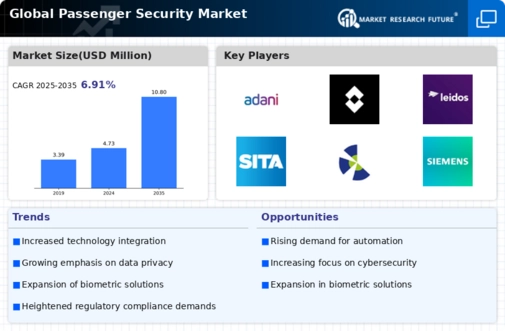Market Analysis
In-depth Analysis of Passenger Security Market Industry Landscape
There is a great number of factors that shape the passenger security market and affect the development, acceptance as well as upgrading of security solutions aimed at safeguarding different travelers in diverse transport sectors. A major market aspect is the increasing global concern on augmented safety measures to cater for changing threats such as terrorism. The result of this factor is an incessant need for improved passenger safety technologies all across air, water, road and rail ports forcing the market to continuously improve and change security protocols.
Passenger Security Market dynamics are significantly influenced by technological advancements. Advanced surveillance systems, biometric identification, and screening technologies are among the many innovations that facilitate development of more efficient security solutions. These dynamics are characterized by constant improvements in technology through utilization of sophisticated equipment that boost passenger screening capabilities while maintaining relevance in terms of addressing new cyber threats.
Regulatory requirements are one of the basic drivers behind Passenger Security Market dynamics. Strict aviation authorities’ policies along with stringent rules set by transport agencies globally must be adhered to by industry stakeholders. Therefore, market trends show that players have a task to accomplish when it comes to producing security products that satisfy industry guidelines thereby ensuring uniformity and comprehensiveness in guaranteeing passengers’ safety.
Complexity in matters of security necessitates intelligence-driven integrated approaches within Passenger Security Market. Therefore, passenger security should be looked at with a holistic view because risks including terrorism or organized crime keep on changing dynamically all over the world. Such dynamisms portray how well we can share real-time intelligence information using data analytics as well as collaborative efforts between various partners towards securing oneself against any kind of danger before it happens rather than after it occurs.
Global travel justifies international cooperation and standardization prevalent in the Passenger Security Market today. To achieve this goal, there is a need for interoperable systems capable of integrating into different platforms while accommodating varying regulatory environments worldwide across different regions where they operate within or without restrictions put upon them by organizations outside their boundaries. This trend is driven by the requirement of standardized security measures that can guarantee a uniform way of handling passenger travel safety matters.
Market dynamics of passenger security are significantly influenced by public awareness and expectations. The high-profile events and increased awareness about terrorist threats have made the public to become more mindful regarding the importance of strong security frameworks during trips. In reaction to this, non-intrusive screening methodologies, as well as streamlined procedures, have been upheld in order to facilitate efficient passenger flow while keeping them safe.
This is evident from how Passenger Security Market has remained steadfast even during such global issues like Covid-19 pandemic. There are now health safety measures such as health checks, contactless technology and hygiene protocols built into passenger safety processes. Emerging issues which require changes in security arrangements show how flexible these systems are especially when it comes to safeguarding passengers at any given time.
Market dynamics, however, are greatly influenced by collaboration and partnerships within the transportation and security sector. In order to enhance passenger safety, manufacturers, technology developers and transportation authorities work together to establish integrated security solutions. These market dynamics are therefore achieved through collaborative efforts that promote innovative activities, knowledge sharing as well as the development of comprehensive security measures for different modes of transport towards a common approach in ensuring protection of passengers.’











Leave a Comment